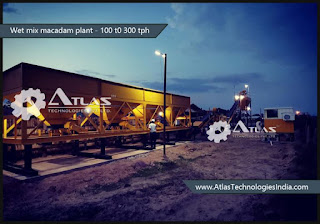information provided here offers a general overview of slinger belts in WMM plants
The length of a slinger belt in a WMM (Wet Mix Macadam) plant can vary depending on the specific design and manufacturer of the plant. However, a typical slinger belt in a WMM plant is usually between 10 to 15 meters (33 to 49 feet) in length.
It's important to note that this length can vary, and it's always best to refer to the manufacturer's specifications or consult the plant's documentation for the exact length of the slinger belt in a specific WMM plant.
In a WMM plant, the slinger belt is an essential component of the equipment used for preparing wet mix macadam, which is a type of base course material used in road construction. The slinger belt is responsible for transporting the aggregates, which typically include crushed stone, gravel, and sand, to the mixing unit.
Here are some additional details about the slinger belt in a WMM plant:
Function: The primary function of the slinger belt is to transfer the aggregates from the storage bins or hoppers to the mixing unit. It helps maintain a continuous flow of the aggregates during the mixing process.
Construction: The slinger belt is typically made of durable rubber or fabric material that can withstand the abrasive nature of the aggregates. It is supported by rollers or idlers along its length to ensure smooth movement.
Length: As mentioned earlier, the length of the slinger belt can vary depending on the specific plant design and manufacturer. The length is determined based on factors such as the capacity of the plant, the distance between the storage bins and the mixing unit, and the desired production rate.
Speed and Control: The slinger belt is driven by a motor that controls its speed. The speed of the belt can be adjusted to regulate the flow rate of the aggregates and ensure accurate proportions in the mix.
Tensioning System: To maintain proper tension and alignment, the slinger belt is equipped with a tensioning system. This system allows for adjustments to be made to keep the belt properly tensioned, which helps prevent slippage and ensures efficient operation.
Maintenance: Regular maintenance of the slinger belt is crucial to ensure its optimal performance. This includes periodic inspection for wear and tear, proper cleaning to remove any buildup of material, and timely replacement of damaged components.
It's important to note that while the information provided here offers a general overview of slinger belts in WMM plants, specific details may vary depending on the manufacturer and the design of the plant. For accurate and detailed information, it's always recommended to refer to the manufacturer's documentation or consult with experts familiar with the specific WMM plant you are referring to.





Comments
Post a Comment